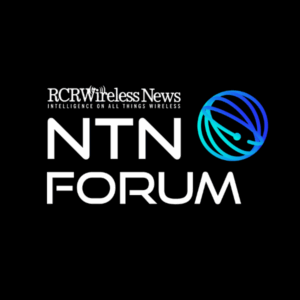An additional $10 billion in capex over three years. Between 7,000 to 8,000 C Band sites installed and ready to go by the end of this year. Verizon made a massive investment in buying C Band spectrum, and company executives made the case that the company is ready to make the most of it.
Verizon spent $45.45 billion on C Band airwaves, with clearing costs and incentive payments bringing the total to $52.9 billion. In presentations to investors, the company’s executive team made the case that its C Band spending will catapult the company into a period of growth driven by 5G and unlimited plan adoption, disruption of the home broadband market via Fixed Wireless Access deployments and industrial 5G enabled by mobile edge computing — all of those with Verizon’s network as the centerpiece.
Verizon provided a deeper look at its C Band winnings: It gained between 140-200 megahertz of spectrum in every market in the contiguous United States, including 60 megahertz of the A-block spectrum which will be the first to be cleared, by December of this year. Verizon executives said that work is already underway to ready between 7,000-8,000 sites by the end of this year, so that they can be turned up as soon as the spectrum is available. Those initial C Band sites will be built on existing Verizon infrastructure. Within twelve months of gaining access to the spectrum, Verizon plans to cover 100 million potential customers with its C Band network, with a ramp-up period in 2022-23 to cover 175 million POPs, and coverage of 250 million+ POPs in the period of 2024 and beyond.
In addition to its expected $17.5-$18.5 billion of network capital expenditures that Verizon has already provided as guidance, it will pump another $10 billion into deploying C Band over the next two years to put the spectrum into use as quickly as possible, said CEO Hand Vestberg. The carrier already has equipment ordered and preparation work underway, and some of the devices in use by Verizon customers already have support C Band, company executives said.
Verizon’s overall strategy remains unchanged, Vestberg assured investors, and the company plans to pay down debt over the next two years and anticipates that its C Band deployment will put the company in a position to grow its revenues at a rate of at least 3% going forward.
“We’ve been preparing for this moment for some time,” he said.
Kyle Malady, Verizon’s CTO, also emphasized that Verizon was waiting for the C Band auction to make a major move to supplement its spectrum holdings. The carrier did not see another spectrum auction of similar size and scale coming any time soon, so it made its play for the spectrum that it says will fuel its future.
But Verizon hasn’t forgotten about its mmWave or fiber. On the millimeter-wave front, Verizon says that it will add more than 14,000 mmWave cellular sites this year, for a total of more than 30,000 by the end of this year. Malady said that as Verizon continues to build out mmWave, it feels confident that at least 5% of its traffic will be on mmWave spectrum by the end of this year; the exact increase will depend on how quickly people return to large-venue spaces such as stadiums, where Verizon focused its early mmWave deployments. Eventually, the carrier expects that about half of its traffic could come over its mmWave network.
Verizon is also increasingly serving its cellular sites with fiber that it owns and controls. One-third of Verizon’s 4G and 5G sites are served by its own fiber now, Malady said, and the company expects that to increase to more than 50% in the next three years. Adam Koeppe, Verizon’s SVP of network technology and planning, told RCR Wireless News that by Verizon servicing its own network sites with fiber, it ensures that it has both the capacity and performance that it needs while benefitting from ownership economics.
Malady also noted that Verizon acquired up to 200 megahertz of C Band spectrum in 158 mostly-rural markets, with which it can realize its ambitions in Fixed Wireless Access service as well as provide a more consistent nationwide experience on its network. Executives repeatedly said that Verizon is bullish on the FWA opportunity, which it presented as a potential multi-billion dollar revenue stream and one that would allow it to use one network to serve both consumer and enterprises’ cellular voice-and-data needs as well as provide home broadband as just another line on their Verizon bill. By the end of this year, Verizon plans to cover 15 million households with either 4G or 5G that could provide FWA (mostly 5G), and expected to ramp that up to 30 million households by the end of 2023 and 50 million in 2025.
Ronan Dunne, who leads Verizon’s consumer group, said that Verizon already thought that 5G adoption would come faster than any other “G”, and that based on what it is seeing, it expects to deliver the “fastest mobile adoption curve” with C Band; he noted that going forward, all of the new 5G devices that company sells to postpaid subscribers will be C-Band-compatible. He showcased new in-home CPE for FWA that he said is very easy for customers to install themselves and said that Verizon’s strategy going forward will include a bundling strategy to serve all of its customers’ connectivity needs.







